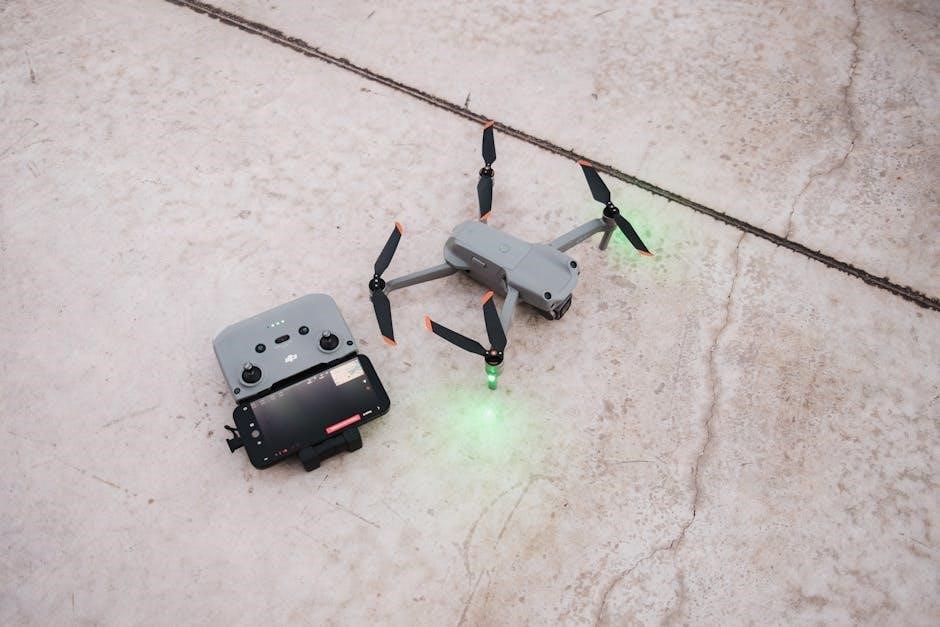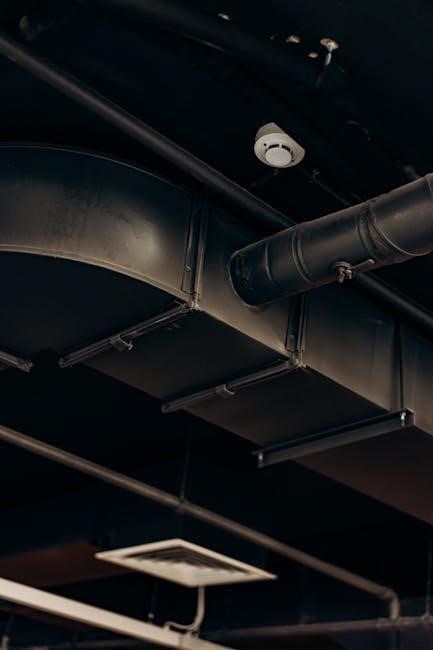kichler ceiling fan remote control manual
Summary
Download your Kichler ceiling fan remote control manual here! Find easy setup guides, troubleshooting tips, and more to get your fan working perfectly.

Welcome to the comprehensive guide for Kichler Ceiling Fan Remote Control Manual; This essential resource provides detailed instructions for installation, troubleshooting, and maintenance, ensuring optimal performance and longevity of your ceiling fan. Packed with model-specific information and troubleshooting tips, it helps users master remote control features and resolve common issues efficiently. Designed to enhance your experience, this manual is a must-have for seamless operation and customization of your Kichler ceiling fan.
Overview of Kichler Ceiling Fans and Remote Control Features
Kichler ceiling fans are renowned for their durability, style, and advanced features, offering a seamless blend of functionality and aesthetics. The remote control system enhances user convenience, allowing easy adjustment of fan speed and direction from anywhere in the room. Designed for indoor use, these fans are compatible with various lighting fixtures, enabling customization to suit different spaces. The remote control operates on a 12-volt battery, ensuring safe and wireless functionality without being tied to household wiring. Features like reversible operation and dimming capabilities provide energy efficiency and versatility. With models such as the Kichler Icon fan, users enjoy intuitive control and quiet performance. The remote system is designed to work with a wide range of Kichler fans, ensuring compatibility and ease of use for a personalized experience.

Installation and Setup
Proper installation ensures optimal performance. Follow steps for aligning electrical connections, securing components, and syncing the remote control for seamless operation and functionality.
Model Identification and Compatibility
Identifying your Kichler ceiling fan model is crucial for proper installation and compatibility. Model numbers are typically found on the motor housing label, blade arms, or canopy area. The 300 series denotes indoor fans, while the 330 series is for outdoor use. The 337 series offers premium features. Suffixes like NI (Brushed Nickel) or WH (White) indicate finishes. Compatibility checks ensure your remote control and accessories work seamlessly with your fan. Verify the model number with Kichler’s database or manual to avoid mismatches. Proper pairing prevents operational issues and guarantees warranty coverage. Always consult the manual for specific compatibility charts and guidelines to ensure your setup is optimized for performance and longevity.
Tools and Requirements for Installation
For a successful installation of your Kichler ceiling fan, gather the necessary tools and materials. A torque wrench, voltage tester, and screwdrivers (Phillips and flathead) are essential. Ensure your electrical box meets the fan’s weight and amperage requirements. Verify the ceiling’s structural integrity to support the fan’s weight. If installing a downrod, select the correct length based on ceiling height. For remote control systems, ensure compatibility with your fan model. Always follow the manufacturer’s specifications for wiring and mounting hardware. Some models may require specialized tools, so consult the manual for precise requirements. Proper preparation ensures a safe and efficient installation process, preventing potential issues like wobbling or electrical malfunctions. Double-check all components before starting to avoid delays.
Blade Orientation and Installation
Proper blade orientation and installation are critical for optimal performance and balance of your Kichler ceiling fan. Ensure blades are installed in the correct position, as specified in the manual, to achieve proper balance and aesthetics. Some models require blades to be mounted in specific orientations to maintain symmetry and airflow efficiency. Before installation, inspect the blades for any damage or warping, as these can cause operational issues. Secure the blades firmly to the blade arms using the provided hardware, ensuring all screws are tightened to the recommended torque specifications. Incorrect installation may lead to wobbling or noise. For models with reversible blades, follow the manual’s instructions to switch between summer and winter settings. Always verify blade weight and balance to ensure smooth operation. Proper alignment and secure mounting are essential for both functionality and safety. Refer to the manual for model-specific blade installation guidelines.
Downrod Selection and Compatibility
Selecting the correct downrod for your Kichler ceiling fan is essential for proper installation and performance. The downrod length depends on ceiling height, with standard lengths ranging from 12 inches for 10-foot ceilings to longer options for higher spaces. Ensure the downrod is compatible with your fan model, as specified in the manual, to maintain structural integrity and warranty validity. Using an incompatible downrod may lead to imbalance or safety hazards. Always refer to the compatibility chart in your manual to confirm the correct size and type for your fan. Proper installation involves securing the downrod to the fan motor and ceiling mounting bracket tightly. Follow the manual’s torque specifications to avoid over-tightening, which could damage the motor housing. Correct downrod installation ensures stable operation, reduces wobbling, and enhances overall performance.
Control Integration and Wiring Diagrams
Proper control integration and wiring are crucial for seamless operation of your Kichler ceiling fan. The manual provides detailed wiring diagrams to ensure correct connections between the fan, remote control, and wall switches. Follow the step-by-step guide to integrate the remote control receiver with the fan’s motor and lighting system. Ensure all wires are securely connected to their corresponding terminals, as indicated in the diagram. The remote control operates on a 12-volt battery and does not require direct wiring to household current. Refer to the manual for specific instructions on pairing the remote with the receiver unit. Correct wiring ensures smooth control over fan speed, direction, and lighting features. Always verify connections with the provided diagrams to avoid electrical issues and maintain warranty coverage. Proper integration guarantees efficient and safe operation of your ceiling fan system.

Troubleshooting Common Issues
Identify and resolve common issues like wobble, noise, or remote connectivity problems by checking loose screws, verifying proper wiring, and ensuring correct remote programming as outlined.
Diagnosing Ceiling Fan Wobble
Ceiling fan wobble can be diagnosed by checking for loose screws on the motor housing, fan blades, and blade arms. Ensure all screws are tightened properly. Verify the canopy cover fits snugly onto the ceiling mounting bracket. Inspect the blades for balance and straightness; bent or warped blades may cause wobble. Use a balancing kit if necessary to ensure even weight distribution. Check the downrod for compatibility with ceiling height, as incorrect sizing can lead to instability. If issues persist, refer to the manual or consult a professional for proper installation and adjustment.

Addressing Noise Problems
Noise issues with your Kichler ceiling fan can often be resolved by identifying the source. Tighten all screws on the motor housing, fan blades, and mounting bracket to eliminate loose components. Lubricate bearings if they are serviceable, using silicone-based lubricant as recommended. Check for blade misalignment or uneven balance, which can cause vibration and noise. Ensure the fan is installed on a sturdy electrical box and that the downrod is compatible with your ceiling height. If noise persists, consult the manual for troubleshooting charts specific to your model. For persistent issues, contact Kichler customer service or a professional for assistance. Regular maintenance and proper installation are key to minimizing noise and ensuring smooth operation.
Resolving Remote Control Connectivity Issues
If your Kichler ceiling fan remote control is not functioning properly, start by ensuring the remote has a working battery. Replace the battery with a 12-volt type, such as Duracell MN21 or Eveready A23, if necessary. Next, check that the remote is synced with the receiver unit. Follow the model-specific programming sequence outlined in your manual to reset the connection. If issues persist, ensure no physical obstructions are blocking the signal between the remote and receiver. Verify that the receiver is properly installed and wired according to the wiring diagram. If interference occurs, check for nearby devices that may be affecting the frequency. For advanced models, consult the manual for frequency settings or reset procedures. If connectivity problems remain unresolved, contact Kichler customer support for assistance.
Fixing Speed and Direction Malfunctions
Addressing speed and direction issues with your Kichler ceiling fan remote control begins with ensuring proper battery installation. Replace the 12-volt battery if necessary. If connectivity is stable, check the receiver wiring for any loose connections. Verify the fan’s blade balance to prevent wobble, which can affect motor performance. Consult the manual for model-specific reset procedures or diagnostic steps; If malfunctions persist, contact Kichler’s customer support for specialized assistance, ensuring optimal functionality is restored efficiently.

Maintenance and Upkeep
Regular maintenance ensures your Kichler ceiling fan operates efficiently. Lubricate serviceable bearings and inspect hardware for tightness. Refer to the manual for detailed schedules and procedures.
Recommended Maintenance Intervals

Regular maintenance is crucial for optimal performance and longevity of your Kichler ceiling fan. Clean the fan blades and motor housing every 2-3 months to prevent dust buildup. Inspect and tighten all screws and bolts every 6 months to ensure stability. Lubricate serviceable bearings every 12-18 months, using the recommended lubricant specified in the manual. Check electrical connections annually to avoid power issues. For outdoor models, increase maintenance frequency due to exposure to moisture and weather. Always refer to the manual for specific schedules tailored to your fan model. Proper upkeep ensures smooth operation, reduces noise, and extends the lifespan of your ceiling fan. By following these intervals, you can maintain efficiency and enjoy trouble-free use for years.
Lubrication Points and Serviceable Bearings
Kichler ceiling fans with serviceable bearings require periodic lubrication to ensure smooth operation. Locate the bearings in the motor housing, accessible by removing the light kit or fan blades. Use a high-quality, non-detergent oil or silicone-based lubricant, as specified in the manual. Apply a few drops to the bearings every 12-18 months or when noise is detected. Avoid over-lubrication, as it may attract dust and cause damage. For outdoor models, lubricate every 6-9 months due to environmental exposure. Always refer to the manual for exact locations and lubrication intervals, as this varies by model. Proper lubrication prevents friction buildup, reduces noise, and extends the fan’s lifespan. Regular maintenance ensures efficient performance and minimizes wear on moving parts. Keep track of lubrication dates for optimal upkeep.
Hardware Inspection and Tightening
Regular hardware inspection and tightening are crucial for maintaining your Kichler ceiling fan’s stability and performance. Start by examining the mounting bolts, blade arms, and canopy screws. Ensure all connections are snug but avoid over-tightening, which can damage components. Use a torque wrench for precise tightening, following the specifications in your manual. Check blade arm screws periodically, as they may loosen over time due to vibration. For outdoor models, inspect hardware more frequently to address effects of weather exposure. Lubricate any movable parts if necessary. Document your inspections and tightening schedules to stay organized. If unsure about any step, consult a professional to prevent potential safety hazards or warranty voidance. Regular maintenance ensures your fan operates smoothly and quietly for years to come. Always prioritize safety and follow manufacturer guidelines for optimal results.

Remote Control Features and Programming
The Kichler remote control offers advanced features like speed adjustment, direction control, and light dimming. Programming options include frequency settings and compatibility customization for seamless fan operation.
Remote Control Battery and Power Requirements
For optimal performance, the Kichler remote control requires a 12-volt battery, such as Duracell MN21 or Eveready A23. It is essential to use the specified battery type to ensure proper functionality and avoid damage. The remote is not wired to the household 120-volt current, relying solely on battery power. Regularly check the battery level, as low voltage may cause connectivity issues. Replace batteries when the remote’s range or responsiveness decreases. Always use compatible replacements to maintain performance and prevent malfunctions. Proper battery maintenance ensures seamless control over fan speed, direction, and lighting features. Refer to the manual for detailed instructions on battery installation and disposal guidelines. This section focuses solely on power requirements, ensuring your remote operates efficiently without interference from other systems.

Programming the Remote Control
Programming the Kichler remote control ensures seamless communication between the remote and ceiling fan. Begin by installing the 12-volt battery in the remote, ensuring proper alignment of the terminals. Next, locate the receiver unit attached to the fan and turn on the power. Press and hold the “Pair” or “Program” button on the remote for 3-5 seconds until the indicator light flashes. Release the button and immediately press the “High” speed button to synchronize the remote with the receiver. For models requiring frequency settings, refer to the manual to input the correct code. Ensure no other devices are interfering during programming. After successful pairing, test the remote by adjusting fan speed and direction. If issues arise, repeat the process or consult the troubleshooting section. Proper programming ensures reliable operation and full functionality of your Kichler ceiling fan remote control.
Frequency Settings and Compatibility

Frequency settings are crucial for ensuring compatibility between the Kichler remote control and ceiling fan. The remote operates on a specific radio frequency (RF) or infrared (IR) signal, which must match the receiver unit installed with the fan. For RF models, refer to the manual to locate the frequency code, typically found on the receiver or in the manual. Enter this code into the remote control to establish communication. Ensure no other devices in the vicinity are using the same frequency to avoid interference. Compatibility varies by model, with some remotes designed for specific fan series, such as the DC7206 or Icon fans. Always verify compatibility before pairing to ensure smooth operation; If issues arise, reset the remote and repeat the pairing process. Proper frequency settings guarantee reliable control and optimal performance of your Kichler ceiling fan.

Warranty and Support
Kichler ceiling fans and remotes are backed by comprehensive warranties covering motors, finishes, and electronics. Dedicated customer support is available for inquiries and troubleshooting, ensuring reliable assistance and peace of mind.
Understanding Warranty Terms and Conditions
Kichler ceiling fans and remote controls are covered under comprehensive warranties, ensuring protection for various components. The motor typically has a longer warranty period, while finishes and electronic parts have specific coverage durations. Outdoor models may have different finish warranties due to environmental exposure. Electronic components, such as remote controls and LED drivers, are covered separately, with terms varying by series. Proper installation and maintenance are prerequisites for warranty validity. The manual outlines exact coverage details, including what is included and excluded, helping users understand their rights and responsibilities. By adhering to the guidelines, customers can maximize their warranty benefits and ensure long-term satisfaction with their Kichler ceiling fan investment.
Motor, Finish, and Electronic Component Coverage
Kichler’s warranty program provides distinct coverage for motors, finishes, and electronic components. Motors are typically covered for the longest duration, ensuring reliable operation over time. Finishes, such as Brushed Nickel or Oil Brushed Bronze, are warranted against defects but may exclude certain environmental damages, especially for outdoor models. Electronic components, including remote controls and LED drivers, have separate terms, often shorter than motor coverage. The manual specifies exact durations and conditions for each component, helping users understand what is protected and for how long. This tiered approach ensures clarity and peace of mind, allowing customers to maintain their ceiling fans with confidence and enjoy lasting performance from their Kichler products.
Contacting Kichler Customer Service
For assistance with your ceiling fan, Kichler offers dedicated customer support. Reach their team through phone, email, or the official website. Provide your model number for quick help. They can address queries, repair needs, and warranty claims. Their support is available Monday-Friday, 8 AM-5 PM EST. For faster service, have your fan’s serial number ready. Visit Kichler’s website for contact details and support resources. Agents are trained to handle technical issues and provide solutions. Ensure to contact them for any concerns to maintain your fan’s performance and warranty. Their support is key to resolving issues efficiently. Use their service for all your ceiling fan needs.
This concludes the Kichler Ceiling Fan Remote Control Manual. It guided you through installation, troubleshooting, and maintenance, ensuring optimal performance and longevity. Refer to it for enhanced functionality and seamless operation.
Key Takeaways for Optimal Ceiling Fan Performance
For optimal performance, ensure proper installation by following model-specific instructions in the Kichler Ceiling Fan Remote Control Manual. Regular maintenance, such as lubricating bearings and inspecting hardware, is crucial for longevity. Troubleshoot issues like wobble or noise by referring to diagnostics in the manual. Remote control connectivity and frequency settings should be programmed correctly for seamless operation. Always verify compatibility of accessories like downrods and light kits. Keep the manual handy for torque specifications and warranty details. By adhering to these guidelines, you can enhance functionality, avoid common issues, and extend the lifespan of your ceiling fan. Secure digital and physical copies of the manual for easy reference during maintenance or repairs.